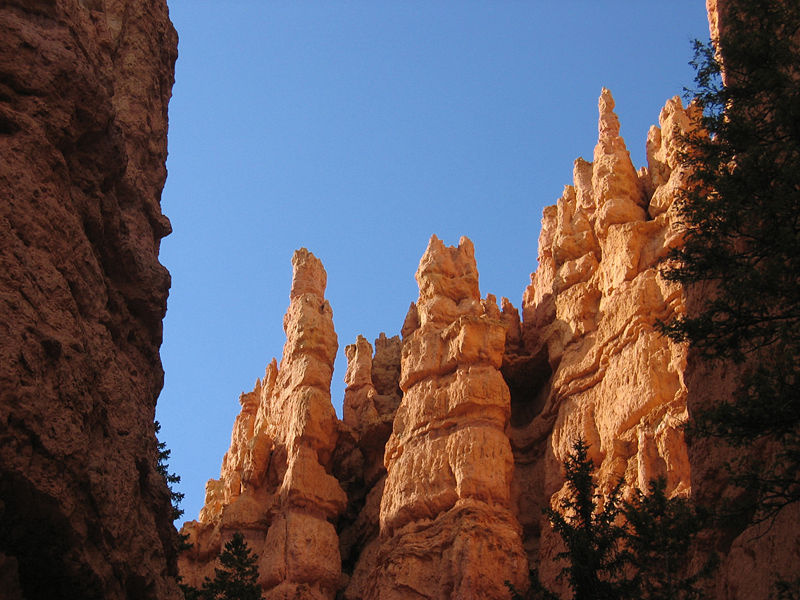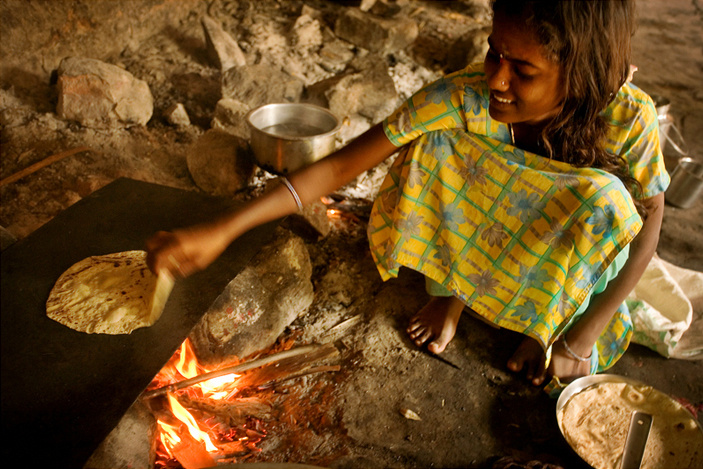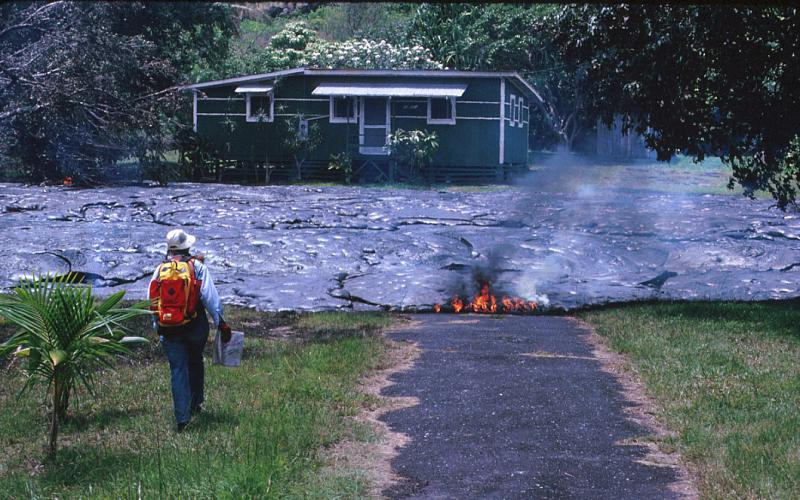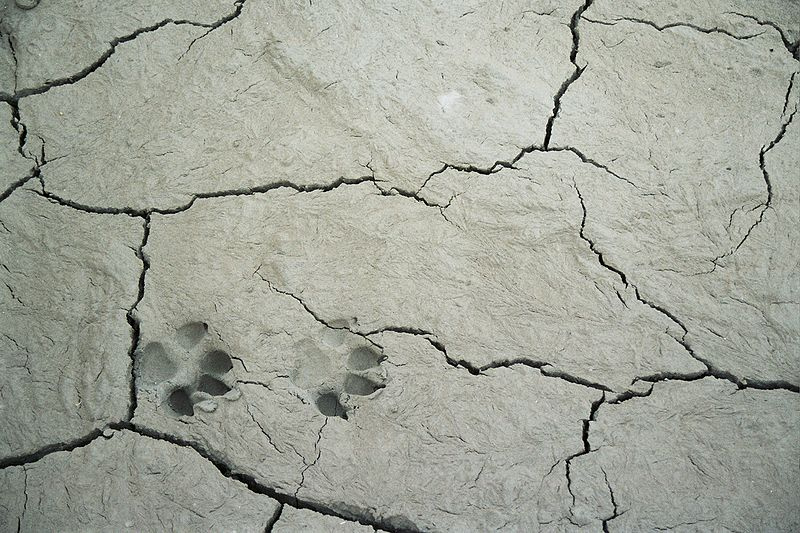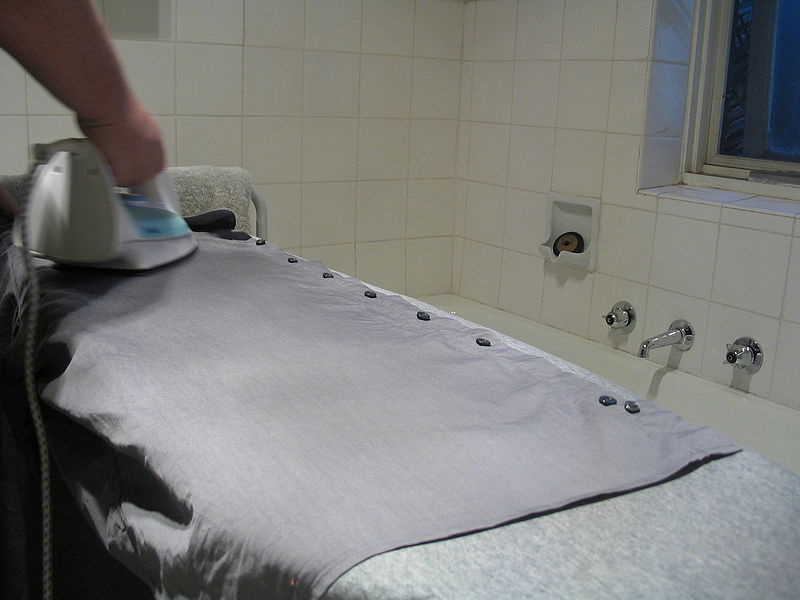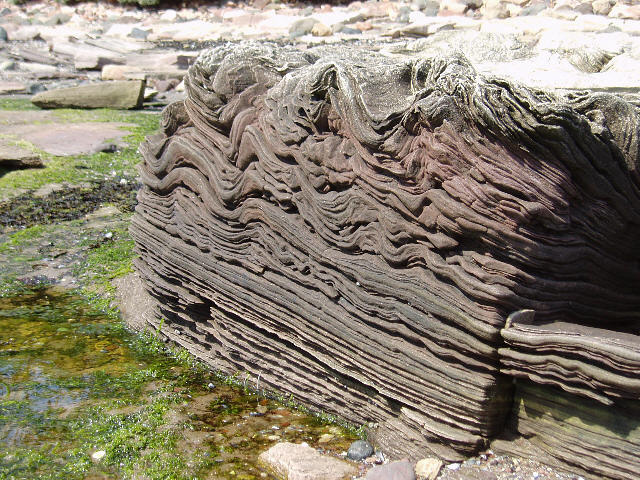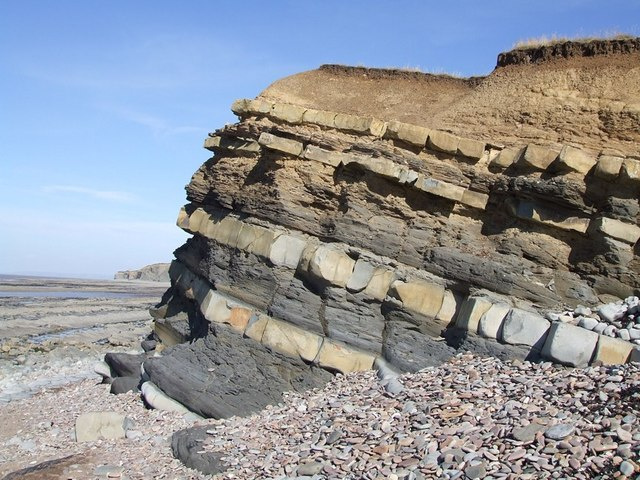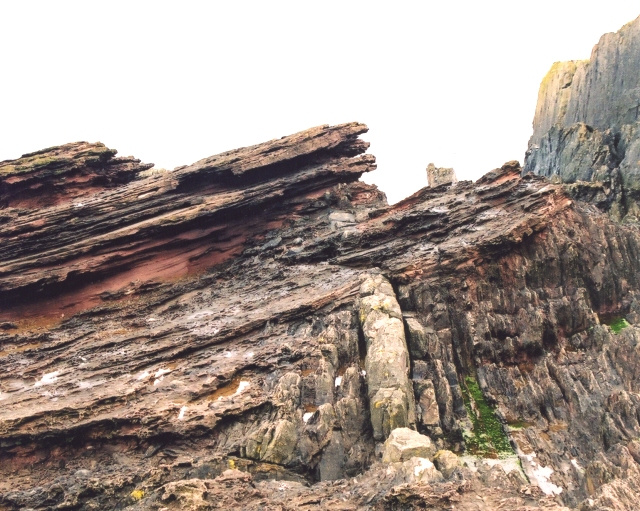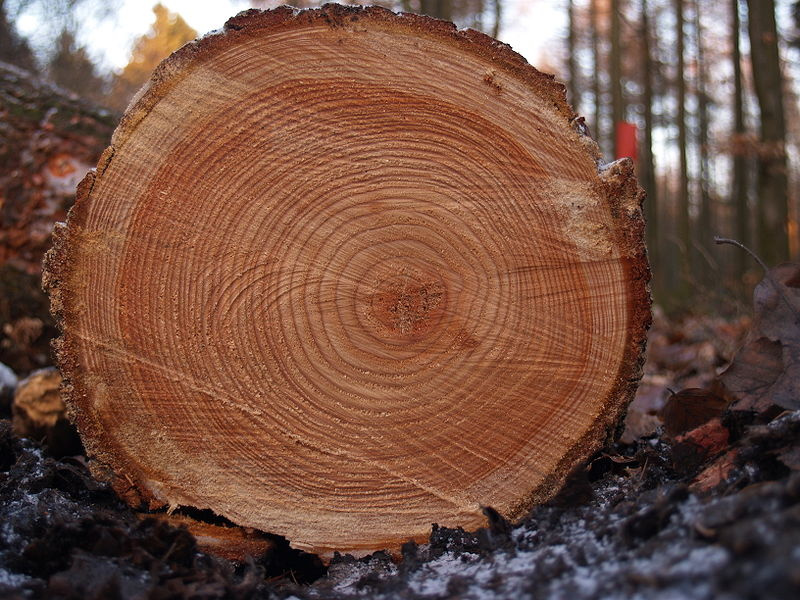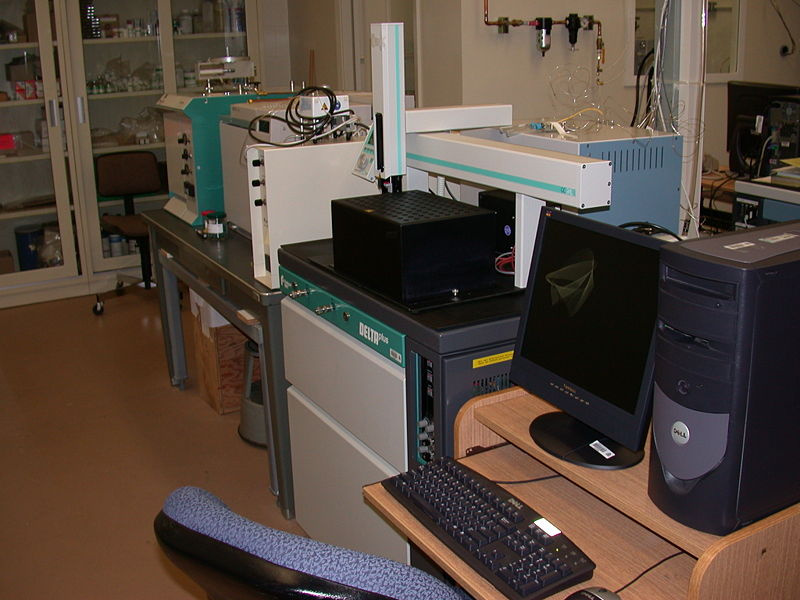Geologic Processes
| |
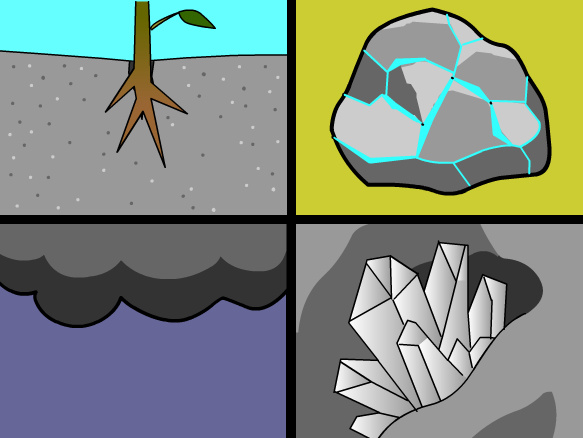
Brainpop: Weathering
Tim gets freaked out by a bat. Moby just wants to go skateboarding.
Handout: Brainpop - Weathering
| |
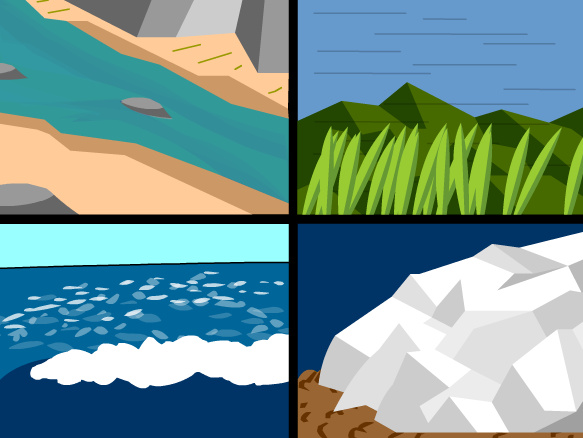
Brainpop: Erosion
Tim discovers sand doesn't taste good. Moby needs some paint.
Handout: Brainpop - Erosion
| |
Handout: History of Geology
The way rocks are made is fairly similar to cooking. You start off with lots of separate ingredients, then combine them in certain ways. During this process, you might be heating or cooling your ingredients, squishing them together, separating them into smaller pieces, or waiting a long time before the meal is finally ready.
| |
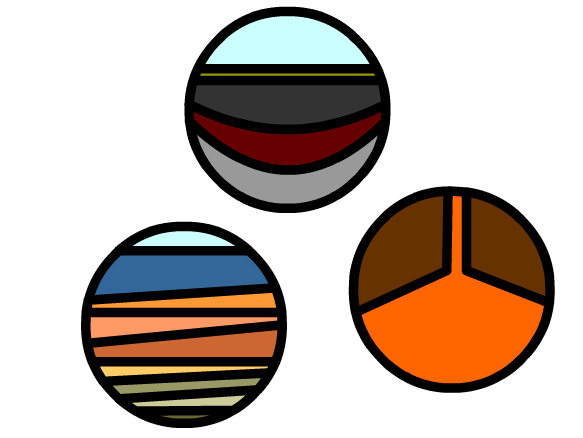
Brainpop: Rock Cycle
Tim and Moby decide that Earth can be a little too active for comfort.
Handout: Brainpop - Rock Cycle
| |
Handout: Rock Cycle
Igneous rocks were formed from molten rock. This means from lava (on the surface of the earth) or from magma (in the ground). Molten rock can flow like a liquid, as you can see from the lava surrounding this house in Hawaii. And, for rock to be molten, it must be really hot. Look closely, and you can see the asphalt road being set on fire by the lava flowing over it, and a tree in the back left of the picture catching fire.
Sedimentary rocks were formed when pieces of rock got cemented together. This usually happens with mud gluing tiny pieces of rock in place as the mud hardens. The footprints in the photo were made by an animal while the mud was still wet. Look even closer, and you can see delicate feathery marks left in the mud by aquatic plants. As the mud dried out, cracks formed (including one going through the footprint), and eventually the whole area became hard rock.
Metamorphic rocks are formed when lots of heat and pressure are added to a rock. The heat softens up the rock so it can be squished or stretched out by pressure. When the rock cools down again, it keeps its new folds. For this example, the top part of the rock was squished in from the sides while it was hot and soft.
| |
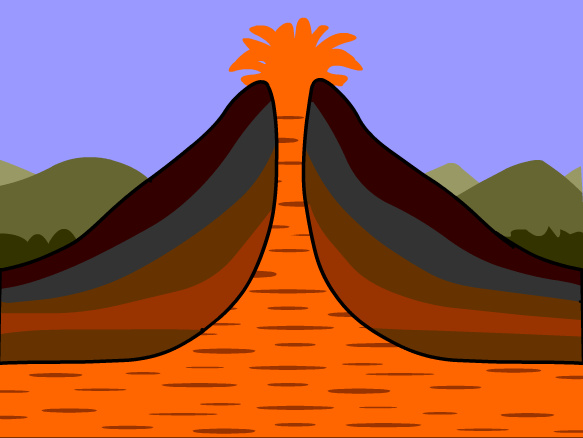
Brainpop: Types of Rocks
Tim is startled by being magically transported about the earth. Moby is a bit of a vandal.
Handout: Brainpop - Types of Rocks
| |
Handout: Rock Identification Lab
Think of how a layer cake is made, and you can decode how a lot of geology was formed. If you see layers in a cliff, you therefore know that the bottom layer was made first, followed by the layer on top of it, and so on. Occasionally, you may come across rocks that were tilted upside down after their layers were made, but usually it is a pretty safe assumption that the oldest rock layers are on the bottom. In this example, the rocks were tilted at an angle after layers were laid down, and the brown top layer was then deposited.
| |
Handout: Deposition of Layers
Handout: Superposition & Disturbed Rock Layers
Rock faces can be quite challenging to figure out. Which layer was formed first? Did the layers get tilted around? Was there erosion that removed some rock?
This particular spot is called Siccar Point, and is found in Scotland. Over the years, many geologists have spent time here, gazing at the rock face and forming different theories about how the surface of Earth has changed over time.
| |
Handout: Faulting and Igneous Activity
Handout: Rock Layer Puzzles
Layers of rock are sort of like tree rings. However, it may take tens of thousands of years, or longer, to make a layer of rock. These layers of rock will be spread across a landscape when they form. Over time, erosion may remove some parts of the layers. It helps to think of layers like library shelves. A layer of books may stop at a walkway, and then keep going on the other side. The same thing is true for rock layers that have been interrupted or have had parts removed.
| |
Handout: Relative and Absolute Dating
Handout: Absolute Dating

